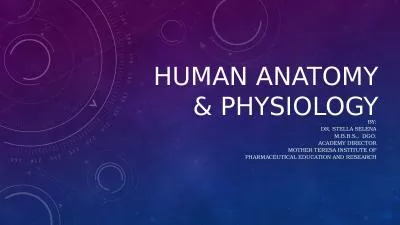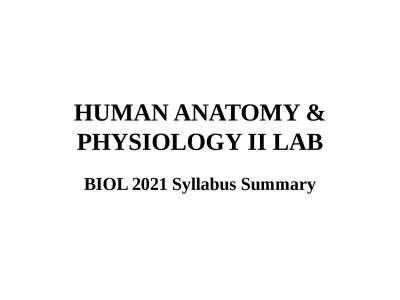PPT-Introduction to Anatomy and Physiology
Author : kittie-lecroy | Published Date : 2016-06-03
Chapter 1 History of Anatomy amp Physiology Important Individuals William Harvey 1 April 1578 3 June 1657 was an English physician who was the first to describe
Presentation Embed Code
Download Presentation
Download Presentation The PPT/PDF document "Introduction to Anatomy and Physiology" is the property of its rightful owner. Permission is granted to download and print the materials on this website for personal, non-commercial use only, and to display it on your personal computer provided you do not modify the materials and that you retain all copyright notices contained in the materials. By downloading content from our website, you accept the terms of this agreement.
Introduction to Anatomy and Physiology: Transcript
Chapter 1 History of Anatomy amp Physiology Important Individuals William Harvey 1 April 1578 3 June 1657 was an English physician who was the first to describe correctly and in detail the systemic circulation and properties of blood being pumped to the body by the heart. 1 Introduction p 3 Fig 11 A The earliest studies of anatomy and physiology probably dealt with treating illnesses and injuries B Early healers relied on superstitions and magic C Later herbs were used to treat certain ailments D Eventually the stage I will be able to . distinguish between Anatomy & Physiology.. Aim. : . What distinguishes . Anatomy and Physiology?. Unit . 2: Talking Like a Doctor—Introduction of Human Body. 2. .1. AGENDA. Introduction. Mr. Weakley. Sports Science. Sports science is a discipline that studies how the healthy human body works during exercise, and how sport and physical activity, promote health from cellular to whole body perspectives. The study of sport science traditionally incorporates areas of Physiology, Psychology, Anatomy, Biomechanics, and Biochemistry. . Syllabus. Course design. Blackboard. Grading scheme. Class rules and policies. New edition of textbook came out this fall!. (2. nd. Edition). Old edition. is okay to use. Lab Manual. (MUST PURCHASE). Dr. Tony Serino. “The nature of the body is the beginning of medical science.” . . Hippocrates ~350 . B.C.E. Intro: Topic Objectives. Be able to identify basic body plan that underlies all anatomy. Lesson 1.1: The Language of Anatomy and Physiology. Lesson 1.2: Basic Physiological Processes. Lesson 1.3: How Forces Affect the Body. Lesson 1.4: Understanding Science. Lesson 1.1. The Language . of . pharynx to esophagus all food changes that occur in the alimentary canalAnatomy Physiology Digestive System Ziser 2003breaking large molecules proteins fats starches etca thick coating of bicarbona APHYSIOLOGYI IIFULL-YEAR SEQUENCE WITH LABTRANSFER ASSURANCE GUIDE TAG May 4 2021Transfer Assurance GuideFull-Year Sequence of Anatomy and Physiology I IIwith LabMay 4 20211Major Courses Hours/Cours Anatomy & . Physiology. What is Human. ‘Anatomy’?. Human anatomy is the study of the structure and morphology of the parts in the human body.. This means the shape of them and their correct location and orientation.. Explain how anatomy and Physiology are related. Pg. 1-21. Anatomy vs. Physiology. Anatomy . the study of the structure and shape of the body and its parts and relationship to one another. Physiology . •Gross anatomy is the study of structures that can be seen with the naked eye.. •Microscopic anatomy is the study of structures that require a microscope to be seen. . Physiology is related to the functions of the body and all its parts, including cells, tissues and organs.. [EBOOK] Anatomy Physiology Made Easy: An Illustrated Study Guide for Students To Easily Learn Anatomy and Physiology
http://skymetrix.xyz/?book=1952914167 BY:. DR. Stella Selena. M.B.B.S., DGO.. Academy Director. Mother Teresa Institute Of. Pharmaceutical Education and Research. Two Branches Of Science. Anatomy. : Is the science of the body structures and their relationships among them. BIOL 2021 Syllabus Summary. Course Information. Credit Hours:. Biology 2020 (lecture) = 3, Biology 2021 (lab) = 1. You must register for lecture and lab if this is the first time you are taking the course. If you are registering for the evening sections you must register for both the evening lecture and lab sections..
Download Document
Here is the link to download the presentation.
"Introduction to Anatomy and Physiology"The content belongs to its owner. You may download and print it for personal use, without modification, and keep all copyright notices. By downloading, you agree to these terms.
Related Documents

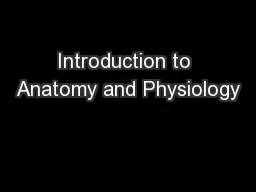


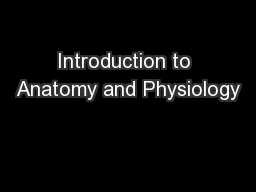
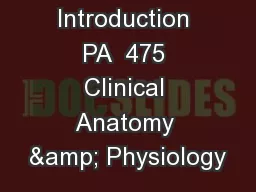
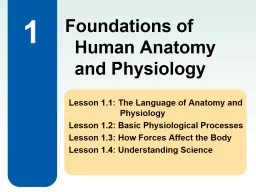
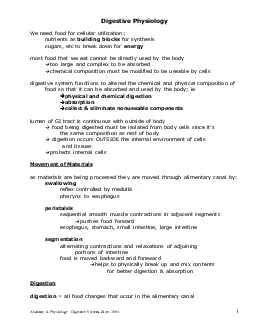

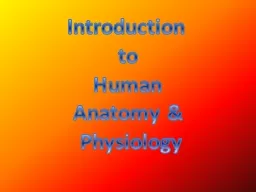
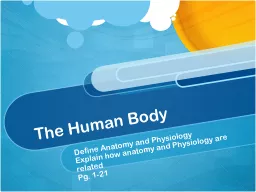
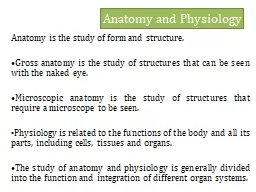
![[EBOOK] Anatomy Physiology Made Easy: An Illustrated Study Guide for Students To Easily](https://thumbs.docslides.com/1005765/ebook-anatomy-physiology-made-easy-an-illustrated-study-guide-for-students-to-easily-learn-anatomy-and-physiology.jpg)
